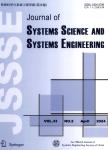GPSPiChain-Blockchain and AI based Self-Contained Anomaly Detection Family Security System in Smart Home
作者机构:School of ICTUniversity of TasmaniaSandy Bay7005Australia
出 版 物:《Journal of Systems Science and Systems Engineering》 (系统科学与系统工程学报(英文版))
年 卷 期:2021年第30卷第4期
页 面:433-449页
核心收录:
学科分类:12[管理学] 1201[管理学-管理科学与工程(可授管理学、工学学位)] 081203[工学-计算机应用技术] 081104[工学-模式识别与智能系统] 08[工学] 0835[工学-软件工程] 0811[工学-控制科学与工程] 0812[工学-计算机科学与技术(可授工学、理学学位)]
基 金:This research was supported by School of ICT,University of Tasmania,Sandy Bay We thank the anonymous reviewers whose comments/suggestions helped improve the quality of this manuscript
主 题:Blockchain security global positioning system(GPS) self-organizing maps(SOM) smart home
摘 要:With advancements in technology, personal computing devices are better adapted for and further integrated into people’s lives and homes. The integration of technology into society also results in an increasing desire to control who and what has access to sensitive information, especially for vulnerable people including children and the elderly. With blockchain rise as a technology that can revolutionize the world, it is now possible to have an immutable audit trail of locational data over time. By controlling the process through inexpensive equipment in the home, it is possible to control whom has access to such personal data. This paper presents a block-chain based family security system for outdoor tracking and in-house monitoring of users’ activities via sensors to detect anomalies in users’ daily activities with the integration of Artificial Intelligence (AI). For outdoor tracking the locations of the consenting family members’ smart phones are logged and stored in a private blockchain which can be accessed through a node installed in the family home on a computer. The data for the whereabouts and daily activities of family members stays securely within the family unit and does not go to any third-party organizations. A Self-Organizing Maps (SOM) based smart contract is used for anomaly detection in users’ daily activities in a smart home, which notifies emergency contact or other family members in case of anomaly detection. The approach described in this paper contributes to the development of in-house data processing for outdoor tracking, and daily activities monitoring and prediction without any third-party hardware or software. The system is implemented at a small scale with one miner, two user nodes and several device nodes, as a proof of concept;the technical feasibility is discussed along with the limitations of the system. Further research will cover the integration of the system into a smart-home environment with additional sensors and multiple users, a



